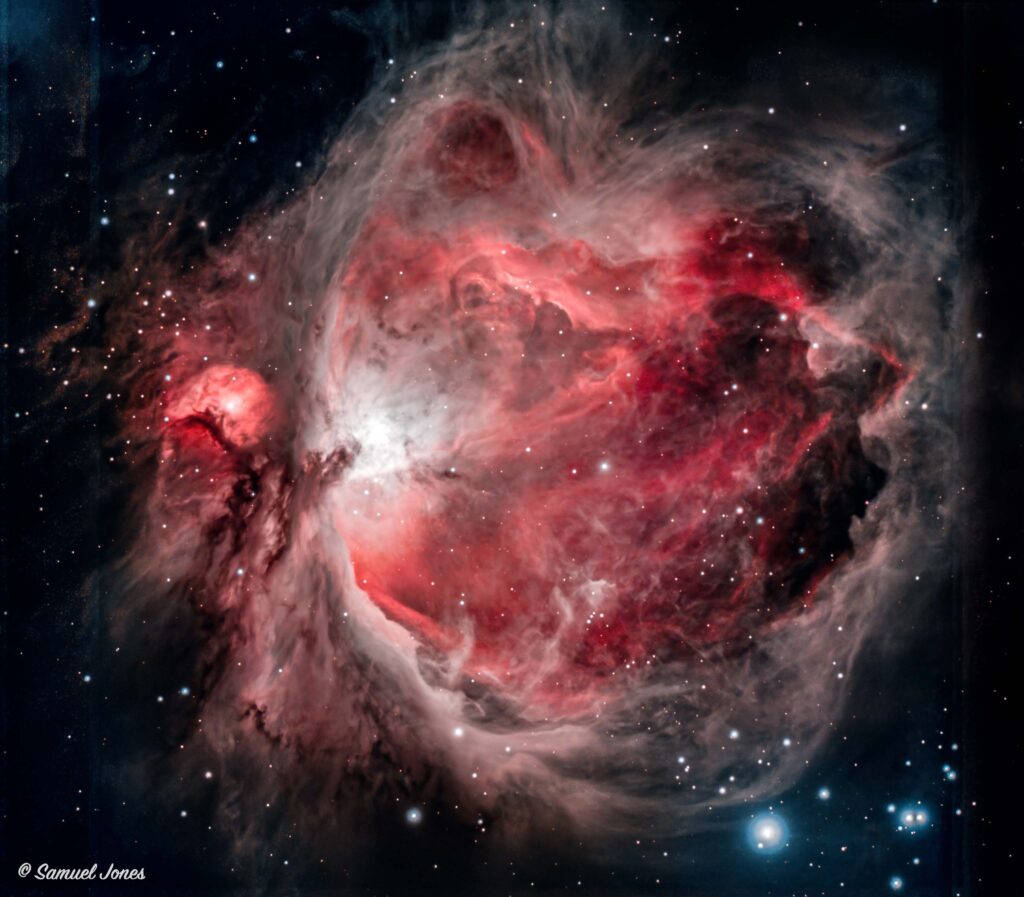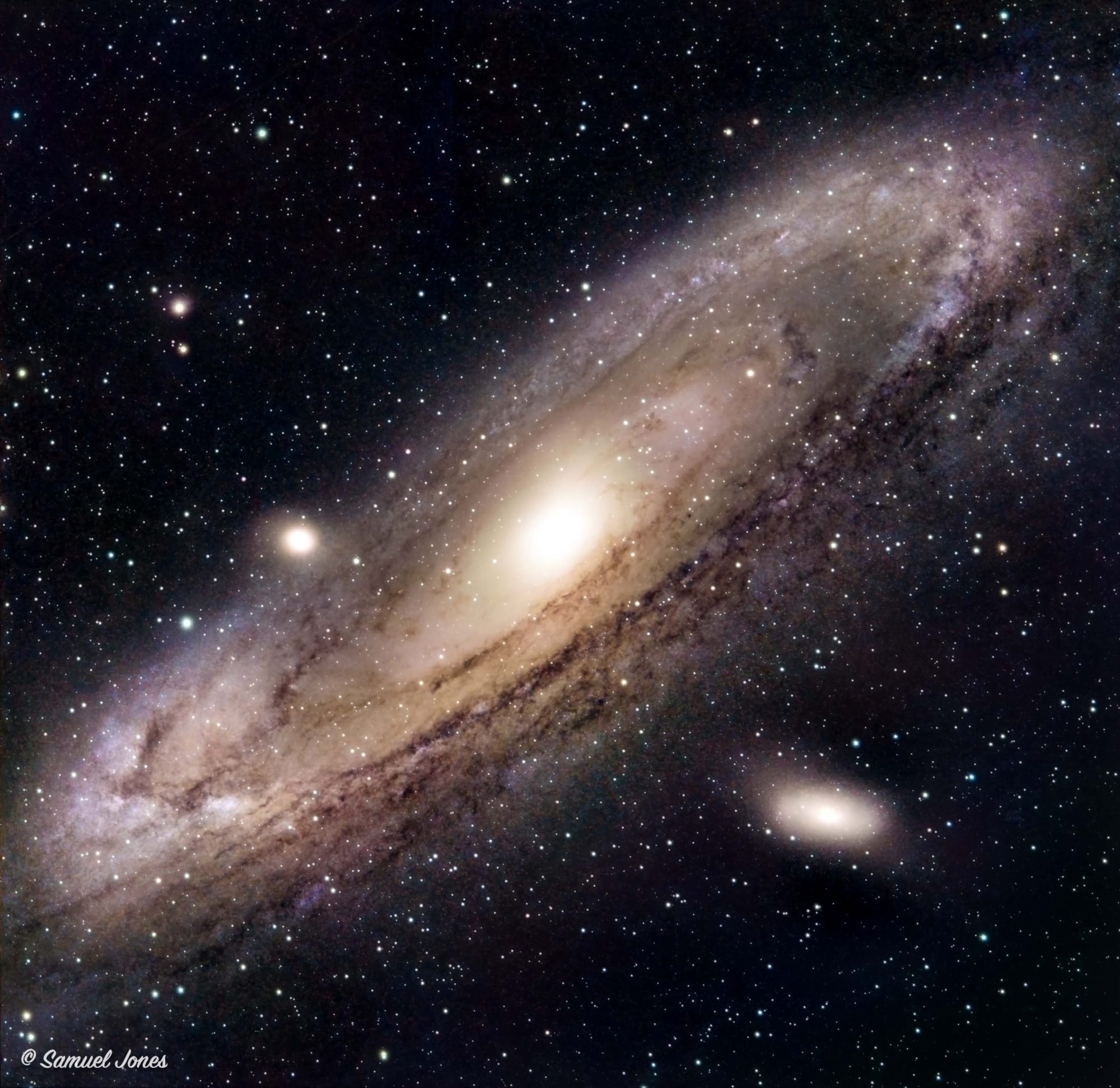
The Lord reigns; he is robed in majesty; the Lord is robed; he has put on strength as his belt. Yes, the world is established; it shall never be moved. Your throne is established from of old; you are from everlasting.
Psalm 93:1-2
The Orion Nebula is one of the brightest nebulas and closest star forming regions in the night sky. A very popular object by both imagers and visual astronomers, its great brightness makes it a spectacular view for both. Under a dark sky, the nebula can be seen with the naked eye as a fuzzy patch in the center star in the sword of the Orion constellation.
One of the most fascinating features of the Orion Nebula is the Trapezium of stars at its center. Here is some info from NASA on the Trapezium:
“The bright central region is the home of the four most massive stars in the nebula. The stars are called the Trapezium because they are arranged in a trapezoid pattern. Ultraviolet light unleashed by these stars is carving a cavity in the nebula and influencing the growth of hundreds of smaller stars. Located near the Trapezium are stars still young enough to have disks of material encircling them. These disks are called protoplanetary disks or “proplyds” and are too small to see clearly in this image. The disks are the building blocks of planetary systems.”
This image was taken over two nights and consists of 11 hours and 40 minutes of exposure time.
Equipment used:
Telescope: Astro-Tech AT130ED + 0.8x reducer/flattener (f5.6)
Mount: SkyWatcher AZ-EQ6 Pro
Camera: ZWO ASI533MC Pro
Autoguider: 60mm svbony scope + asi120mm mini
